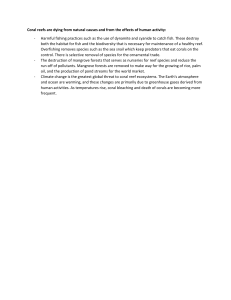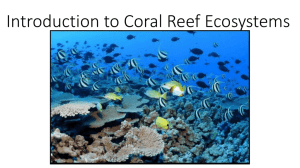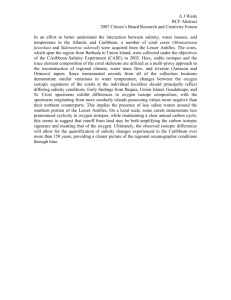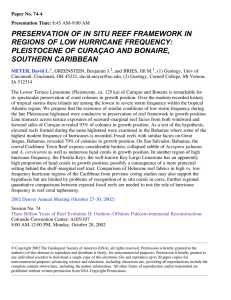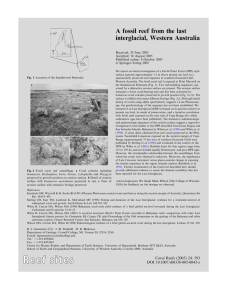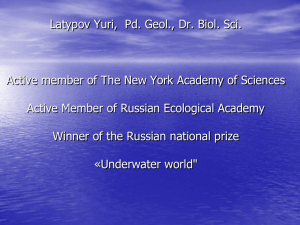CLIMATE INDICATORS DETECTED IN ANNUAL GROWTH BANDS OF PLEISTOCENE MONTASTRAEA
advertisement
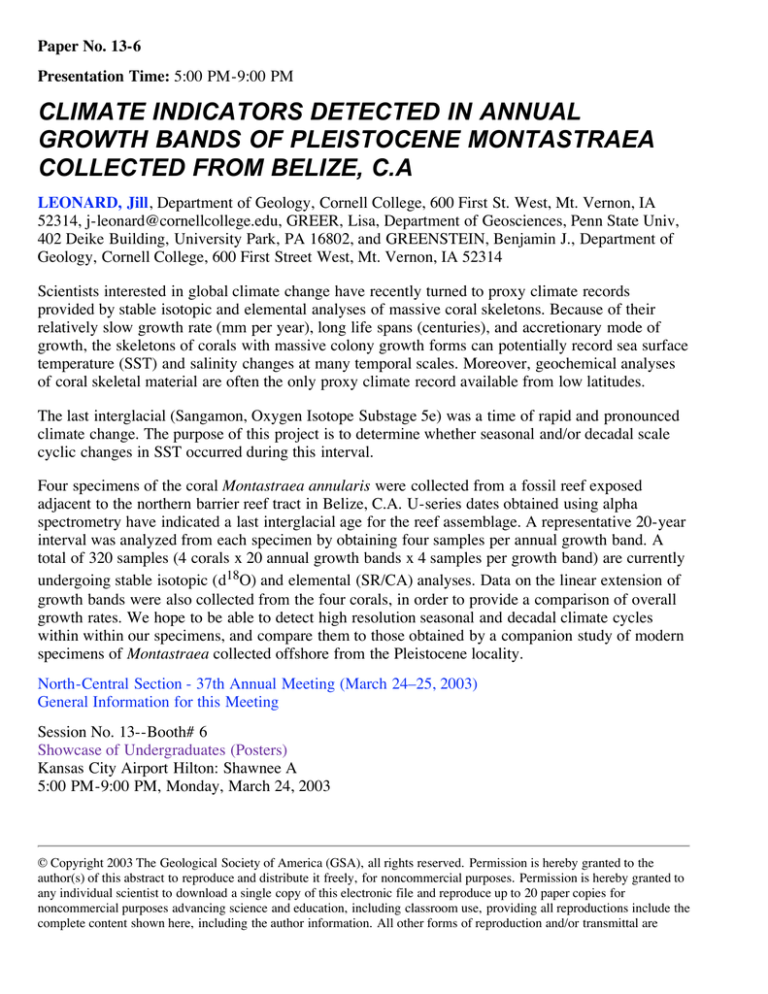
Paper No. 13-6 Presentation Time: 5:00 PM-9:00 PM CLIMATE INDICATORS DETECTED IN ANNUAL GROWTH BANDS OF PLEISTOCENE MONTASTRAEA COLLECTED FROM BELIZE, C.A LEONARD, Jill, Department of Geology, Cornell College, 600 First St. West, Mt. Vernon, IA 52314, j-leonard@cornellcollege.edu, GREER, Lisa, Department of Geosciences, Penn State Univ, 402 Deike Building, University Park, PA 16802, and GREENSTEIN, Benjamin J., Department of Geology, Cornell College, 600 First Street West, Mt. Vernon, IA 52314 Scientists interested in global climate change have recently turned to proxy climate records provided by stable isotopic and elemental analyses of massive coral skeletons. Because of their relatively slow growth rate (mm per year), long life spans (centuries), and accretionary mode of growth, the skeletons of corals with massive colony growth forms can potentially record sea surface temperature (SST) and salinity changes at many temporal scales. Moreover, geochemical analyses of coral skeletal material are often the only proxy climate record available from low latitudes. The last interglacial (Sangamon, Oxygen Isotope Substage 5e) was a time of rapid and pronounced climate change. The purpose of this project is to determine whether seasonal and/or decadal scale cyclic changes in SST occurred during this interval. Four specimens of the coral Montastraea annularis were collected from a fossil reef exposed adjacent to the northern barrier reef tract in Belize, C.A. U-series dates obtained using alpha spectrometry have indicated a last interglacial age for the reef assemblage. A representative 20-year interval was analyzed from each specimen by obtaining four samples per annual growth band. A total of 320 samples (4 corals x 20 annual growth bands x 4 samples per growth band) are currently undergoing stable isotopic (d18O) and elemental (SR/CA) analyses. Data on the linear extension of growth bands were also collected from the four corals, in order to provide a comparison of overall growth rates. We hope to be able to detect high resolution seasonal and decadal climate cycles within within our specimens, and compare them to those obtained by a companion study of modern specimens of Montastraea collected offshore from the Pleistocene locality. North-Central Section - 37th Annual Meeting (March 24–25, 2003) General Information for this Meeting Session No. 13--Booth# 6 Showcase of Undergraduates (Posters) Kansas City Airport Hilton: Shawnee A 5:00 PM-9:00 PM, Monday, March 24, 2003 © Copyright 2003 The Geological Society of America (GSA), all rights reserved. Permission is hereby granted to the author(s) of this abstract to reproduce and distribute it freely, for noncommercial purposes. Permission is hereby granted to any individual scientist to download a single copy of this electronic file and reproduce up to 20 paper copies for noncommercial purposes advancing science and education, including classroom use, providing all reproductions include the complete content shown here, including the author information. All other forms of reproduction and/or transmittal are prohibited without written permission from GSA Copyright Permissions.
